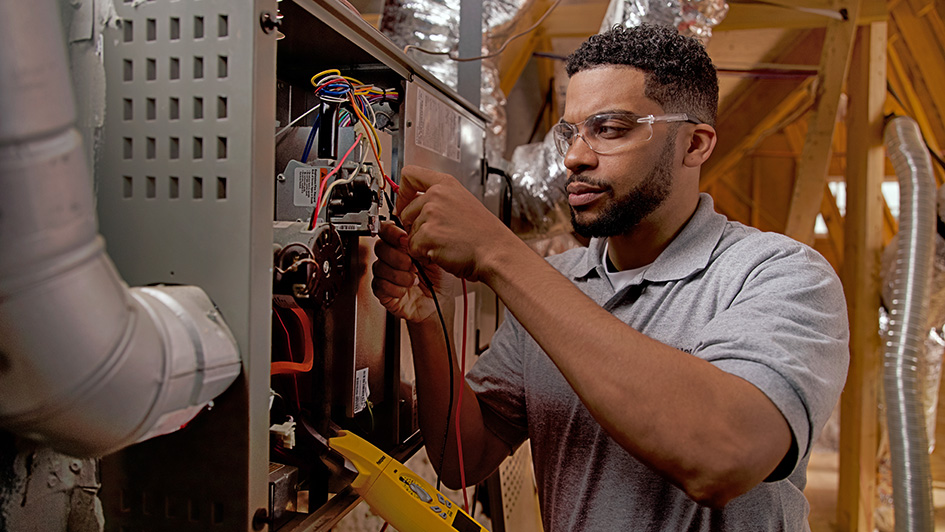
A furnace is often a background player in your home, helping keep you warm in the cold winter months. It regularly doesn’t get noticed until a malfunction appears.
One root cause might be that your furnace has a cracked heat exchanger. It can be a safety risk, so it’s important to know the evidence of a cracked heat exchanger and what to do if you suspect that may be the problem.
What Is a Heat Exchanger in a Furnace?
A heat exchanger helps move heat from the combustion chamber of your furnace to the air that circulates throughout the air ducts. It typically does this using coils or tubes that heat up the air while serving as a barrier to keep gas formed in the combustion chamber, called flue gasses, from leaking out into your home.
Is a Cracked Heat Exchanger Dangerous?
Given its key role, it’s no surprise that a damaged heat exchanger can pose a risk. A damaged heat exchanger can permit dangerous gasses – such as carbon monoxide, which can be lethal – to flow through your home.
For obvious reasons, do NOT turn on your heating if you believe there's a crack in the heat exchanger, as letting it run could make the whole household ill. Call an HVAC professional immediately if you believe your furnace has a cracked heat exchanger that should be repaired.
Four Warning Signs of a Cracked Heat Exchanger:
- Furnace switches off: A crack in your heat exchanger can cause your furnace to turn off.
- Unusual Smells: If the air coming out of your furnace has a strong chemical smell, it could be a sign gasses are slipping through cracks in your heat exchanger. These byproducts, which can smell like formaldehyde, are a major warning sign.
- Carbon monoxide alarm goes off or you feel health problems: If a cracked heat exchanger is releasing carbon monoxide into your home, your carbon monoxide alarm may go off or household members could experience signs of carbon monoxide poisoning. Symptoms include headaches, dizziness, weakness, nausea, vomiting or feeling tired. If an alarm goes off or you feel sick, leave the home as soon as you can and then call for help.
- Soot: If you see black sooty accumulating on the exterior of your furnace, it’s an indication something could be seriously wrong.
What You Can Do if the Furnace Heat Exchanger is Cracked
If you suspect your furnace has a cracked heat exchanger, contact a pro with extensive experience in furnace installation New Castle as soon as possible so they can examine your system and, if necessary, handle a furnace heat exchanger replacement. Costs will vary depending on the situation, but estimates can roughly suggest $1,000 to $3,000.
Fortunately, the good news is that heat exchangers are regularly included in the warranty. You’ll want to review the warranty paperwork on your furnace, since while the warranty won't always cover the entire cost of repairs, it can significantly reduce your bill.
How to Prevent a Cracked Heat Exchanger in Your Home
One of the best ways to minimize the risk of problems in your furnace overall is with routine furnace maintenance. Furnaces provide the best possible return on investment when they run efficiently. Contacting a trained professional to check your furnace for worn-out parts, clogged filters and other potential problems can keep you from getting a big bill later on.
It’s also beneficial to review your furnace filters every few months – it’s ideal some filters be swapped out every 90 days or sooner if they are dirty or grimy. While the filters aren't a part of the heat exchanger itself, the strain of dragging air through a clogged filter makes the entire furnace work more vigorously to do its job. And the harder your furnace has to work, the more strain parts like the heat exchanger will sustain.
